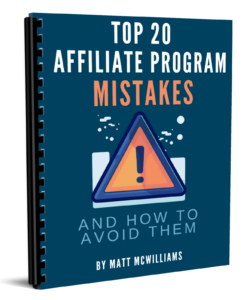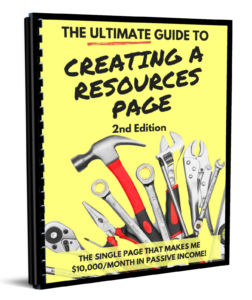This is a guest post by my friend Jeff Goins. Jeff is an award-winning blogger, entrepreneur and author of five books. His latest book, The Art of Work, is about finding your calling and purpose in your vocation and life. For a limited time, you can get a copy of it practically for free here.
A couple of years ago, my friend Bryan Allain left a secure job at a Fortune 500 company, where he’d been slowly climbing the corporate ladder for nearly a decade, to venture out on his own as a writer. When I asked him how his colleagues reacted, he said they were surprisingly supportive, some even envious. But something disturbed him.
Every conversation ended the same way. “I wish I could do that,” they would say. “Well, you can, you know,” Bryan would respond. To which they would usually list out the reasons why they felt they couldn’t. They wouldn’t know where to begin or what to do. They’d be scared of losing their health benefits or risking their family’s well-being. What if you failed, they wondered. What then?
The Problem isn’t Fear
This bothered Bryan because he felt like what they were really saying was that they were afraid—and rightly so. Quitting a job to chase a dream is anything but safe. If you’re not feeling a little insecure about taking such a leap, then you probably haven’t considered the cost. The problem, then, isn’t the fear; that’s natural. It’s that many get afraid and stay there.
The problem with chasing a dream isn’t fear. It’s being afraid and staying where you are.
We all deal with this fear on some level. What fills us with anxiety, if we let it, is a simple phrase that keeps us from our purpose. It’s six simple words:
“I don’t know what to do.”
What should I write about? What kind of music should I play? What type of business do I open? Where do I begin? I don’t know. And with that seemingly innocuous response, a dream can die. But what we’re really saying in these moments of not knowing is that we want the journey to be safe. We want it drawn out for us—no surprises or setbacks, just a clear beginning and end. Unfortunately, that’s not the way the process usually works.
Maps and Globes
One way to think of it is in terms of maps and globes. Maps are easy. They’re flat and predictable, easy to chart out a course. You can see the whole landscape in a simple, two-dimensional layout.
However, as easy as they are, maps are unrealistic. The world isn’t flat; it’s not color coded and foldable and easily stored in your car’s glove box. Life is too complex and beautiful to be captured on a map. It may help you see the big picture, but it does not help you understand the magnitude of the journey.
A globe, on the other hand, is complex. It spins on an axis. Some globes are even topographical, raised in certain areas where there are mountains or major bodies of water. They’re not the easiest tools in the world to use and certainly more difficult to store, but they’re just about the best picture we have of reality.
Typically, you use a map to travel from one state or province to the next, usually a relatively short distance, whereas you use a globe to travel the world.
Which would you rather use, a map or a globe? It depends on where you’re going.
Not Knowing is No Excuse
When people asked Bryan the specifics of how he would pursue his dream, he was honest, admitting he didn’t know all the answers. He didn’t have a map. He wasn’t even sure exactly where he was headed; all he cared about was moving forward.
Here’s how he once described it to me in conversation: “Say you live in Kansas. It’s not a bad place to live, but you long for the beach. You dream of the waves and sand and sunsets. But you never leave home because you’re not quite sure exactly where on the beach you want to go.”
The path to your dream is more about following a direction than arriving at a destination.
If you aren’t sure how to get started, Bryan would say get out of Kansas. That’s your first step.
Begin to head toward water, and as you move, you’ll find the beach. Once you’re there, you can pick whatever spot you like. You don’t need a specific address to begin. The path to your dream is more about following a direction than arriving at a destination.
When you start pursuing your calling, you may find it to be more difficult than you thought it would be. And that’s okay. It means the journey is bigger than you expected. What you must do is keep moving. Don’t stand still. Don’t squander your time, holding out for someone else to give you permission to start. It won’t happen that way.
No one is going to give you a map. You will have to step out into the unknown, listening for direction as you go. And when you are in doubt, just remember to drive toward water. You can always change directions once you get in the car.
To learn more about discovering and pursuing your calling, check out Jeff’s new book The Art of Work, which you can get almost free right here.
What fears have held you back from pursuing your dreams and calling?
Questions?
Text me anytime at (260) 217-4619.
Or…check out some of my free reports to help you get on the right track:
 |
 |
 |
 |
 |
 |
 |
 |
 |



Great analogy, Jeff – so true – no one is going to give you a map. But almost without exception, as you take each step in faith, you find that obstacles appear much less formidable when you get up close to them!
Looking forward to your book, by the way, Jeff! I pre-ordered it already.
Fears of failure. Fears of failing to provide for my family. Fears of failure to stay healthy. Fears of rejection from family and friends. Fears of the unknown. These are some of the fears which have help me back.
I have a worksheet for those Jon 🙂 Let me see if I can find the link.
Cool! I look forward to getting it in my hands.
These two:
https://www.mattmcwilliams.com/beliefs-holding-back/
https://www.mattmcwilliams.com/insanity-fear/
Both offer worksheets that will help!
The love the section about the map and the globe!
For your question: Fear of making a mistake in front of others, when it comes to my dream to play organ at a church. So I just play for my cats.
Fear of spending time on the wrong things…..Fear of rejection…..Fear of missing out!
Grab the worksheets here Heidi. I know they will help.
https://www.mattmcwilliams.com/insanity-fear/
https://www.mattmcwilliams.com/beliefs-holding-back/
Thank you Matt. I have download both (or I will when the email arrives!)
Great analogy about heading to the beach. Awesome.